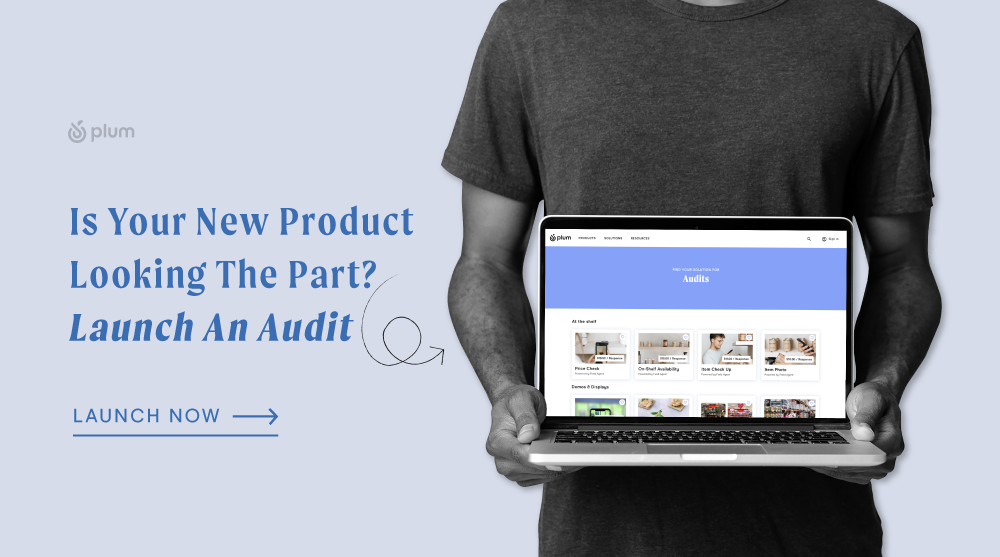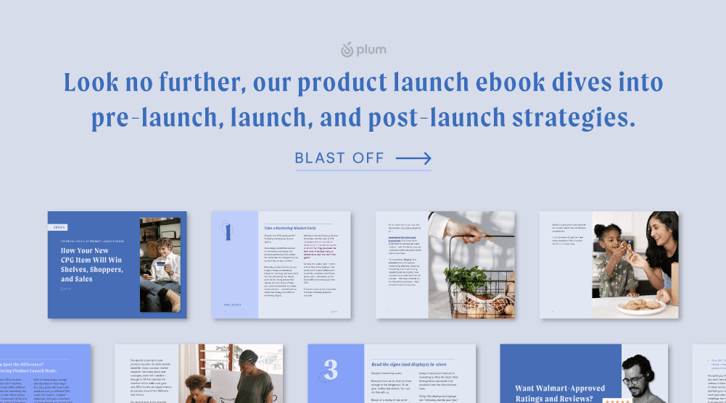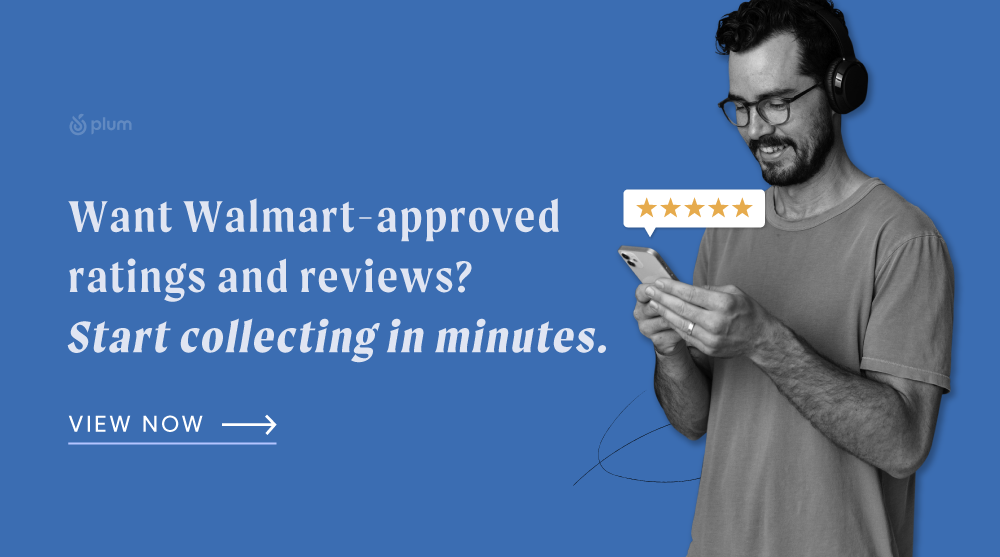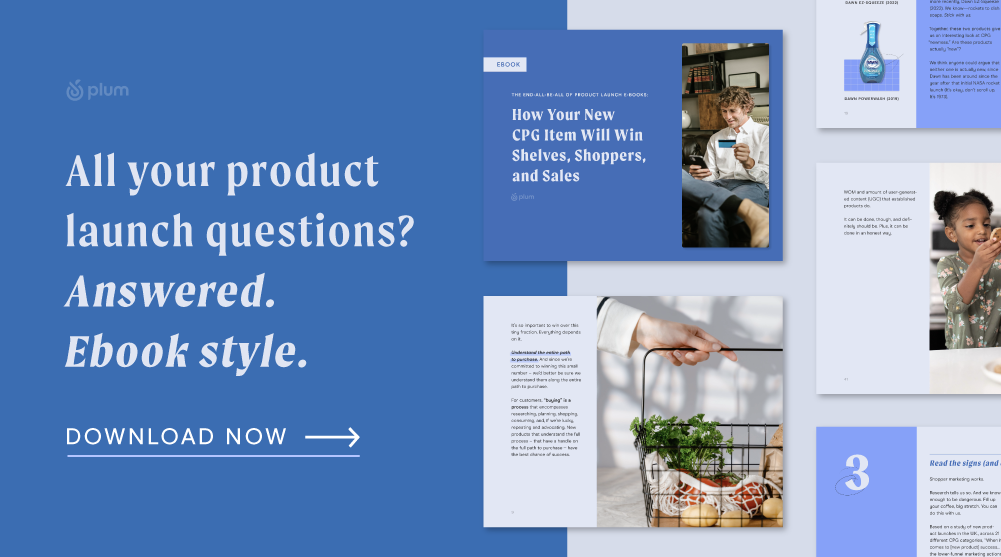
Product Launch Strategy Sesh, Part 3: 7 Post-Launch Priorities
For us, the year 2015 was marked with a few very distinct things: first, was “the dress” blue and black or white and gold? Throwback.
The other distinguishing factor gripped our hearts, sponsored the sound of our morning commutes, and deserved every penny in our bank accounts: Lin-Manuel Miranda’s “Hamilton” on Broadway.
Hot take? Our CEO is not a Hamilton fan (we know, our jaws hit the floor too). So, let's keep that fact that we've taken the liberty to write an entire Hamilton-inspired piece between us.
A few minutes into the award-winning score, lead character Alexander Hamilton sings the line ‘I’m not throwing away my shot,’ in reference to his opportunity to change the fabric of American history.
By now, you see where we’re going with this. But, we’re happy to spell it out: Your product launch—and the 90 days that follow—is your shot. Our script for the days that follow your product launch (with a pinch of your drive and determination) will help your product win the lead role on-shelf and online.
Pop in those headphones, turn up the background music, and read on for 7 ways to get a standing ovation on your post product launch play.
- Audit, audit, audit.
- Keep an open line with your buyer.
- Handle that supply chain.
- Let your customers be your biggest fans.
- Harness the power of ratings and reviews.
- Create trial.
- Blow us all away.
Post-Launch Principle #1: Audit, audit, audit.
Song Rec: What’d I Miss
In parts one and two of this three-part series, we covered pre-launch and launch, and if you know, you know: execution is pivotal to the launch of a new product. Quick math? Launch = execution.
But here’s the deal, killer execution of your retail plan does not end with launch and the words, “mmm, maybe one day.” Nope. Making sure that stores, merchandisers, field staff, and the other actors make good on your pre-launch agreements needs to be top priority.
Don’t get us wrong, it’s great that you’ve dotted your i’s and crossed your t’s that your beautifully-crafted-boss-approved-marketing-mix went off without a hitch for launch day. But, we def recommend you stand by your auditing program through the next 90 days – and beyond.
Of course, you may be able to scale back the audits as the months go on. Every day that your product lives to see another day on shelf, the number of stores you need to audit can usually take a breather.
Here’s a quick scenario though (trust us, we’re visual learners too). Let’s say you plan to launch a new product in 10,000 stores. A successful auditing program might look like:
- Audit 2,000 stores (20%) during launch week
- Over the next 30 days:
- Re-audit any stores where you found an uh-oh with prices, stock levels, promotions in the first audit
- Audit 200-400 stores (10-20% of the original) that weren’t in the original audit
- Over the next 60 days:
- Re-audit any stores with problems
- Audit another 100 stores that weren’t in the original audits
- Beyond: Continue a proactive, spot-check auditing program for the life of the product (this could be a handful of stores every month)
Hold the phone, you might be wondering. Why re-audit?
As our CEO and Broadway-connoisseur Rick West likes to say,
“Problem stores often stay problem stores. Good stores often stay good stores. Audits aren’t just about spotting problems; they’re about gauging store and managerial conditions. So if you find a problem, keep auditing until you can prove to yourself and your team that the problem has been resolved.”
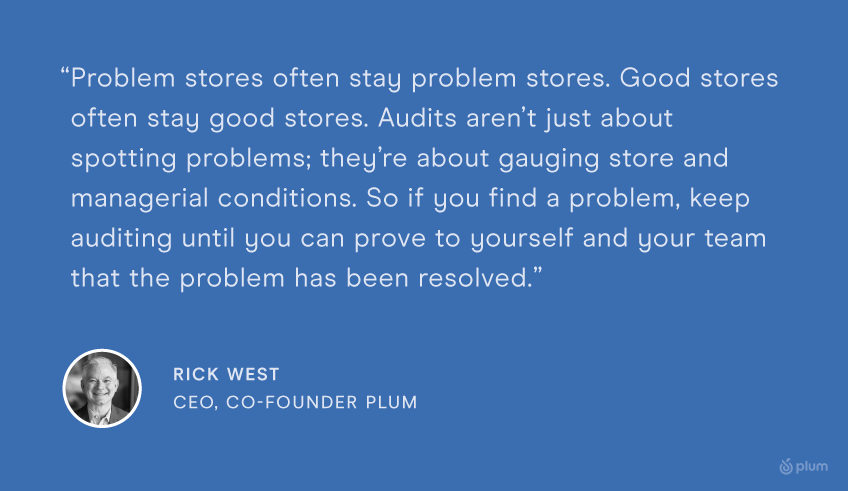
So basically, for the launch period at least, you don’t need to waste your time or $$$ to re-audit a “good store.”
New product launches are risky business. If Tom Cruise was on Cameo, we’d give every last dollar in our marketing budget for a vid on post-product launch.
Post-Launch Principle #2: Keep an open line with your buyer.
Song Rec: The Room Where It Happens
Okay, so let’s say you took our advice on auditing. (💕) You’ll get a handful of data, photos, maybe even video.
But, what do you do with it all?
We’d say: get a move on and don’t waste a second of time.
So often, problems with core merchandising elements (context clues: availability, prices, displays) aren’t in just one store. Super chain stores are basically running the world – king Walmart has almost 5,000 stores in the United States alone – and a wrong price or missing display can blow up to hundreds or even thousands of stores, and that could sink a product launch. No, thanks.
So, if your audit does uncover an issue, get it in the room where it happens—erm, sorry, in front of your buyer, ASAP. The buyer can pull strings to fix it (fingers crossed), but you can also claim a little elbow room with the buyer.
In Product Launch pt. 2 (if you haven’t read it, we think you’d love it), we share a case study where Ashley Pointer of My Brother’s Salsa collected photo-proof that only 39% of stores were marking their products correctly. Y’all, it was wild.
“If we have proof that we submitted promotions but their stores didn’t execute,” Ashley said, “then [buyers] can’t really penalize us for not having sales lift.” (we bolded it so you’d read it again)
That’s what we mean by elbow room. A little grace, you might say.
Obvi, your buyer wants to see your new product succeed, too. They’re also raising their hand and betting on it. Is it musical slander to reference Hamilton and High School Musical in the same blog?
But seriously: any time, (launch or not), that you learn something noteworthy about your category – ring your buyer. They’re always going to want the tea (but not the Boston-tea-party-inducing kind) about what’s happening in the category.
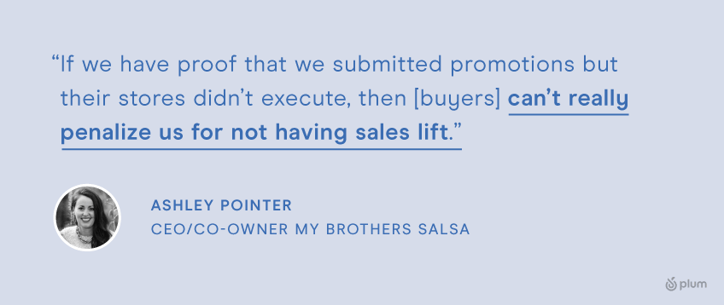
Post-Launch Principle #3: Handle that supply chain.
Song Rec: Stay Alive
Unless you’ve been living under a rock (no offense), you know that the supply chain has been off its rocker. And very unfortunately, it’s make-or-break important for companies launching new products right now.
As a CPG sales exec told us about Q4 retail, it’s important to “hyper-focus on your supply chain, and micromanage inventory, orders, and forecasts at every step in the supply chain.”
Aka, during ride-or-die selling seasons (new-product launches and holidays), brands that helicopter-mom the supply chain – instead of a laid back “let us know if you need anything” – are more likely to come out on top. So, if there were ever a time to be a Karen, this is it.
“The global supply chain is so tangled and disrupted,” the CPG exec continued on, “that those who are paying the closest attention and driving the highest urgency are the ones that will outperform.”
Here’s where you can be paying attention:
- Forecasting
- Order fulfillment
- Inventory levels, in-store and online
- Phantom inventory, POS systems showing inventory is on-shelf, but it isn’t
- Merchandising plans, agreements, partnerships
- The “last 100 feet”
Let’s park there, at the last 100 feet. Just because it’s in-store doesn’t mean it’s on-shelf or on-display. Sad face.
On a serious note, this is especially relevant right now when retailers are struggling to keep stores well-staffed. Less employees on the clock = more oversights.
In these kinds of times, esp. if you’re launching a product and trying to stay alive past the first 90 days, you should seriously consider providing your own labor. That is, merchandising services that can manage the last 100 feet.
Post-Launch Principle #4: Let your customers be your biggest fans.
Song Rec: History Has Its Eyes On You
“I bought this, and I love it,” said between friends over apps at happy hour is music to our ears. Real life experiences hold the real power in marketing your product.
Brands like yours that are launching new products should bring in word-of-mouth (WOM) as early in the launch process as possible.
You heard us right: while brands can’t fully control WOM, they can spark it. They don’t have to just hope and wait.
WOM looks different in our social media era – some of it is more organic than others. Whether it’s your sister mentioning how much whiter her teeth are after switching toothpastes, or a stranger reviewing a blender (acai bowls, anyone?) on Amazon, both hold serious weight.
Each of these posts has WOM influence:
- Product reviews
- Organic social posts
- Social influencers
- User-generated, long-form content
- Community forums (e.g., Reddit, Facebook Groups)
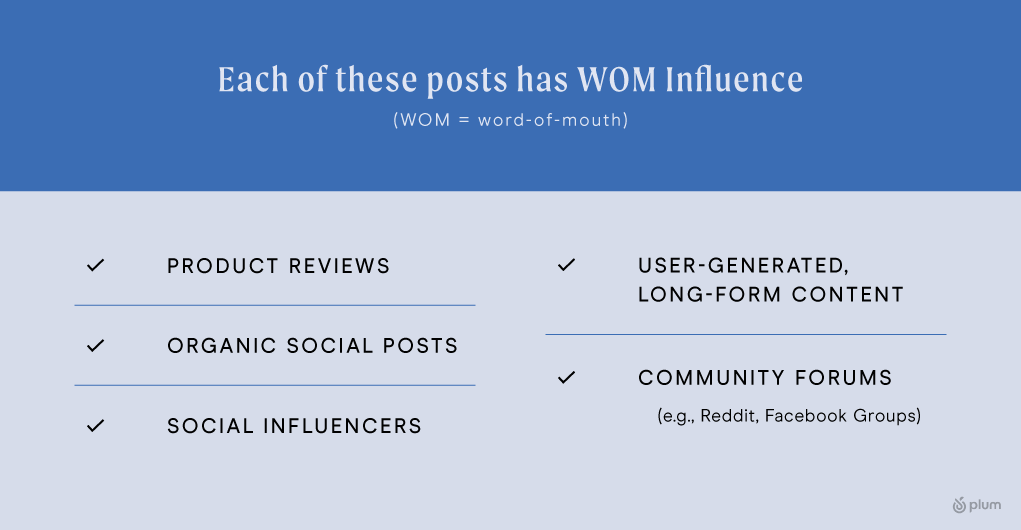
Each of these bullet points can pave the way for new product success.
Just a few days ago, we talked about reasons why new products always start from behind. Here’s anotha one (DJ Khaled): New products don’t reap the benefits that the WOM and amount of user-generated content (UGC) that established products do.
It can be done, though, and definitely should be. Plus, it can be done in an honest way. Cue the next song.
Post-Launch Principle #5: Harness the power of ratings and reviews.
Song Rec: Who Lives, Who Dies, Who Tells Your Story
The days are looong gone when shoppers buy a product without reading product reviews first.
So, if you need reviews in order for your product to sell, then the new products need to get as many positive reviews as possible. As early as possible. Because it matters who tells your story. (Sorry, we can’t stop.)
Here are some staggering stats from a survey of over 1,100 shoppers who make an online purchase every month on average:
- 9-in-10 respondents said they regularly read product reviews to guide their online purchases
- 73% said they at least sometimes read reviews prior to making online purchases of household consumables, and 39% “always” or “often”
- 54% said they at least sometimes read reviews prior to making online purchases of groceries, and 24% “always” or “often”
Not just products like the next Nintendo Switch or crop top need a good product review—CPGs now can’t go without them, either.
In the OPD space, even the success of things like shower gels, pet treats, and protein bars depend on having the right quantity, quality, and recency of reviews.
Ratings & reviews make sure to (obviously):
- Instill confidence in would-be buyers: “Others tried it, and like it.”
- Answer key questions at the online point-of-purchase
- Provide social proof and suggest popularity
But also, for some not-so-obvious reasons:
- Search engine optimization (ensuring your SKUs rank high in searches)
- Retail buyers expect to see reviews on their ecomm PDPs
- They provide insights into the product experience
So, the million dollar question: how can brands launching a new product have the right number of reviews, in the right place, at the right time?
Yeah, asking customers for reviews or joining Amazon Vine are just fine, but most of these take way too long to help a new product nail its make-or-break audition for shoppers and retailers.
We seriously recommend “on-demand” review solutions like these. (We’re a bit biased towards our own). Our solutions are specifically approved by Walmart for use on Walmart.com.
Instead of waiting on reviews, which new products literally can’t afford, on-demand reviews bring on real shoppers to buy a specific product from a specific store or website, try it out at-home, and, then (your favorite part), leave an honest, authentic review where you want it: your brand page, a retailer site, or even syndicated.
Post-Launch Principle #6: Create trial (don’t just hope for it).
Song Rec: What Comes Next?
- If we can get people to try our new product…
- They’d love our product…
- And if they love our product…
- They’ll buy our product repeatedly…
- And if they buy our product repeatedly…
- Our product will be a hit!
We see this rabbit trail all the time. Sounds good on paper. But there’s a problem: All those ifs.
One of those ifs is more daunting than the others: the first one.
New products are unknown to shoppers. In their routines and rhythms, why would they switch it up?
Marketing guru Jack Trout said that U.S. households regularly and consistently purchase the same 150 products, and that these 150 products satisfy the vast majority of the household’s needs.
And here you come along with a new product, planning to wedge it into their regular, tried-and-true pace. Yeah, right.
So, brands are left with a round robin of issues: (Stick with us, we know it’s a downer)
The product won’t succeed unless we get consumers to try the product; we can’t get people to try the product because they’re creatures of habit; because consumers are creatures of habit, our product won’t succeed.
However, this model is actually too in-the-dumps mentality, because we know new products can succeed. Here’s how: new CPG products drive trial better than others.
Driving trial can look like:
- Shopper marketing that changes routines
- Product demos and free samples
- Building word-of-mouth reviews, influencers, user-generated content
This strategy starts with lots of hopeful big spending on the front end, with fingers crossed that product sales will come after – and they usually do.
In these instances, a brand can have shoppers buy their brand new products at specific brick-and-mortar stores or on specific ecommerce platforms. Instead of waiting on trial and sales, the brand can initiate sales (and trial). Plus, the brand gets some additional benefits: (heart eyes)
- On-Demand Reviews - Purchase-verified reviews on ecomm sites
- Digital Demos - User-generated content and professional product photography
- Buy & Try - Customer feedback about the product experience
The brand can then combo-meal-deal these benefits into driving more sales.
So, when a brand has only 90 days to make a lasting impression, the ability to create trial (not just hope for it) deserves a standing ovation.
Post-Launch Principles #7: Blow us all away.
Song Rec: Blow Us All Away + You’ll Be Back
What you do and learn during the 90-day-post-launch can be repurposed into a winning formula for the life of your new product… long after everybody stops calling it “new.”

Consider just five rapid-fire suggestions to keep on keepin’ on:
- Use your success with one retailer to build success with another: Buyers like proven winners, (don’t we all) so show other retailers how you rocked your “audition” with another retailer and their shoppers.
- Continue auditing: You can’t expect from retailers what you don’t inspect first. If you audit, you’ll succeed. Only pull back when you know you’re in the clear.
- Stay category-vigilant: Stay in-the-know about the who, what, when, where, why of your category. Use what you know to have your brand stand out as a category expert in the eyes of retailers and other partners. You know you’re a star.
- Keep things fresh: When you launch a product, you also are the driver of ecomm product pages, corporate webpages, product reviews, online user-generated content. Keep it up to date.
Make things easier on yourself: No one has the energy to keep the launch-season initiative forever. Create processes and find tools (like ours!) that can help your product continue to grow.




